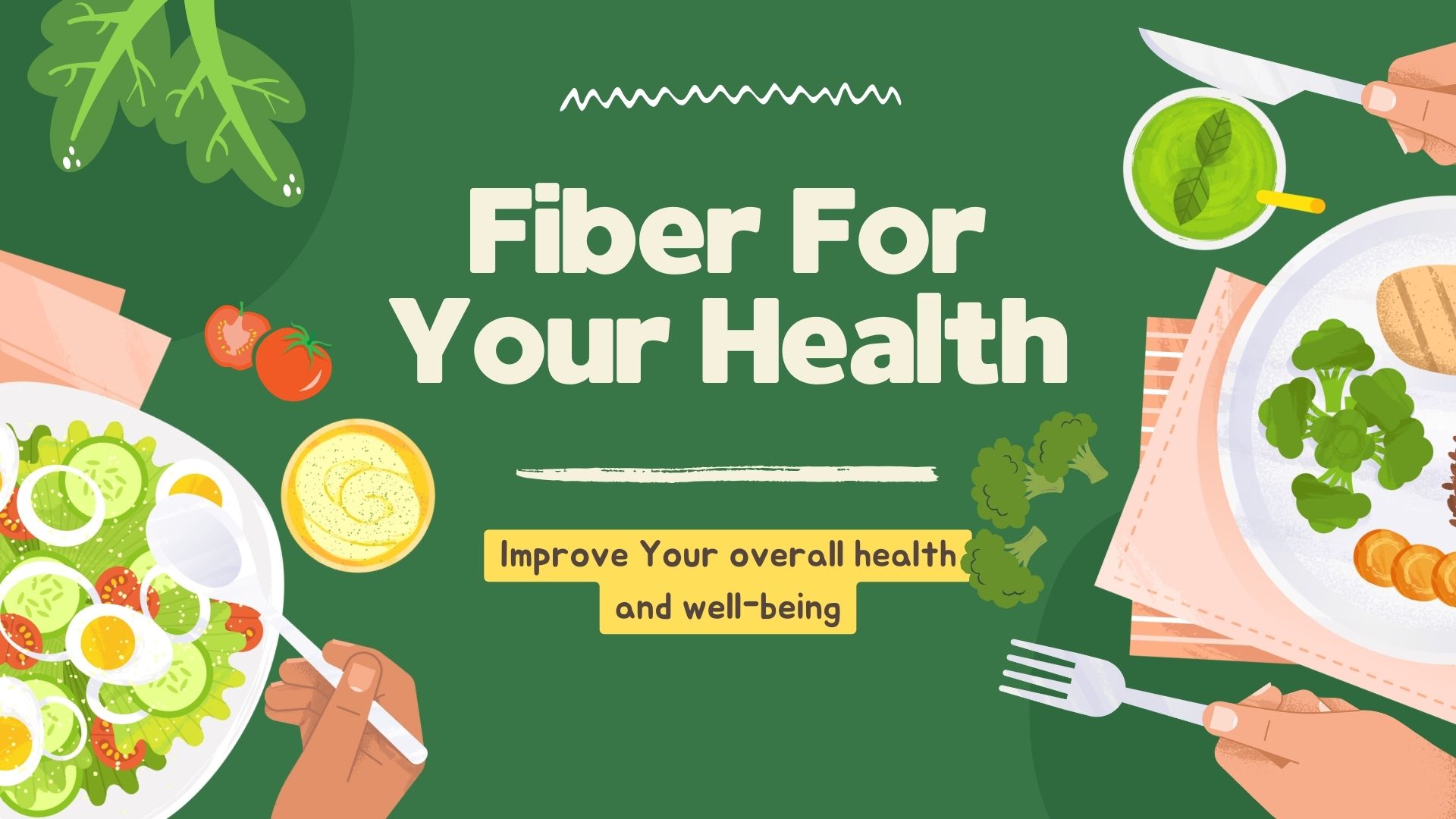Fiber For Your Health

In the realm of nutrition, there’s one powerhouse that we should all be paying attention to and that’s the power of fiber. It’s one of the reasons that almost every nutrition plan involves increasing your plant intake.
Fiber plays a crucial role in our overall health and well-being, from aiding digestion to reducing the risk of chronic diseases.
Fiber is a type of carbohydrate found in plant-based foods that the body can’t digest or absorb. Instead, it passes relatively intact through the digestive system, providing a range of health benefits along the way.
How Fiber Helps
 Digestive Health
Digestive Health
It adds bulk to stool, making it easier to pass, thus preventing constipation and promoting regularity.
Prebiotic
Fiber acts as a prebiotic, feeding the beneficial bacteria in our gut microbiome. A healthy gut microbiome has been linked to improved immune function, reduced risk of certain diseases, and even improved mental health.
Lower Cholesterol
Studies have shown that a high-fiber diet can help lower cholesterol levels, reducing the risk of heart disease.
Managing Blood Sugar Levels
Fiber also plays a crucial role in managing blood sugar levels, making it particularly beneficial for individuals with diabetes.
Weight Management
Fiber-rich foods tend to be more filling. This can aid in weight management by promoting satiety and reducing overall caloric intake.
So, How Much Fiber Do We Need?
The recommended daily intake varies depending on factors such as age, sex, and activity level, but as a general guideline, adults should aim for around 28-40 grams per day. Some scientists have even suggested 50 grams of fiber per day would be ideal. However, most people fall short of this target, with the average American consuming 15 grams of fiber per day.
To ensure you’re getting enough fiber in your diet, focus on incorporating a variety of fiber-rich foods into your meals and snacks. Whole grains such as oats, barley, and quinoa are excellent sources of fiber, as are fruits and vegetables, particularly those with edible skins or seeds. Legumes such as beans, lentils, and chickpeas are also high in fiber and make a great addition to soups, salads, and stir-fries.
Simple Tips to Help You Increase Your Fiber Intake:
Start your day with a fiber-rich breakfast, such as oatmeal topped with fruit and nuts.
Snack on raw vegetables with hummus or whole fruit throughout the day. The average fruit or vegetable contains between 3-5 grams of fiber so we encourage our clients to consume at least 5 different servings of fruits or vegetables every day, you’ll be well on your way to achieving the RDA.
Replace refined grains with whole grains whenever possible.
Experiment with plant-based meals that feature beans, lentils, or tofu as the main protein source.
Add a cup of legumes into your daily nutrition as they are the king of fiber and provide the following:
- Lentils (1 cup, cooked): 15 grams
- Black beans (1 cup, cooked): 15 grams
- Chickpeas (1 cup, cooked): 12 grams
- Kidney beans (1 cup, cooked): 12 grams
- Split peas (1 cup, cooked): 16 grams
Add a handful of seeds to your daily nutrition as they provide a significant amount of fiber also:
- Chia seeds (1 ounce): 11 grams
- Flaxseeds (1 ounce): 8 grams
Make gradual changes to your diet to allow your body time to adjust to higher fiber intake, and be sure to drink plenty of water to help prevent digestive discomfort.
Yours in health & fitness,
Sherri McMillan
